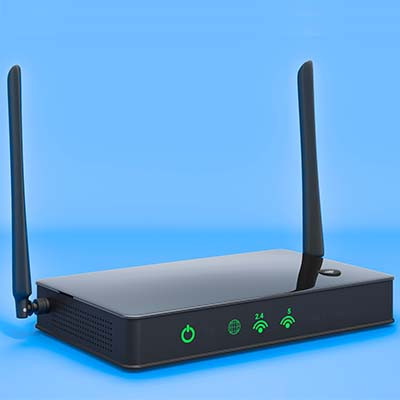WatchPoint Solutions Blog
Discussing Routers and Basic Connectivity
Most modern businesses depend on wireless Internet connectivity (Wi-Fi) to a certain extent. Do you know what it means when we talk about the various speeds of routers, the data they can transfer, and so on? Today, we wanted to clear up some facts about dual-band routers that your business might find handy in the future.
How a Dual Band Router Works
A dual band router connects to your modem and transmits two different speeds of wireless connections: 2.4 and 5.0 GHz, simultaneously. One is much faster than the other, making it ideal for certain tasks. The conditions might vary, but a 2.4 GHz connection is capable of supporting speeds of up to 600 Mbps, compared to the 5.0 GHz connection which sits at 1300 Mbps. These numbers are the ceiling rather than the floor, and the speed you actually get will largely depend on the technology you are using and the transfer protocols it uses.
It’s likely that these ideal conditions will never be fully achieved, so to help you get the most out of your wireless technology, we recommend you play to the strengths of both types of networks simultaneously.
What Should Run on the 2.4 GHz Connection?
A 2.4 GHz connection is beneficial occasionally, but it comes at a cost. It can go through walls and solid objects a lot easier, and its range is significantly larger, but it’s used by so many devices that it’s often not the best choice, as the connection is bogged down by so many random devices connecting to it.
What About the 5 GHz Connection?
A 5.0 GHz connection is more stable in comparison, leading to higher wireless speeds on the whole. It uses short-range signals that aren’t as good at getting through walls and objects, but the speed and reliability is hard to top. You can always use signal boosters to make up the difference in your connection’s range, and if you can invest in this technology, it’s worth it for the additional stability and reliability of the connection.
What’s the Best Connection for You?
In most cases, you’ll find that a 5.0 GHz connection will be better than a 2.4 GHz, but it’s important to keep in mind that some devices don’t give you much choice in what you go with. Some just aren’t compatible with the other, forcing you to opt for one over the other. Thus, why a dual-band router is such a common occurrence in the consumer and business environment. Some devices don’t need the reliable connection of the 5.0 GHz, and some might thrive perfectly fine on a slower 2.4 GHz connection. It’s worth keeping some devices off your 5.0 GHz network so you don’t bog down its speed too much.
If you notice that devices are losing their connections a little more frequently than you’d like, you can make adjustments in real time, provided that the device in question is compatible with both networks. A wired connection is generally preferred for situations where reliability is an absolute must.
If your business needs connectivity technology set up, you know you can contact WatchPoint Solutions for all of your needs. Get started today by calling us at (848) 202-8860.

Comments